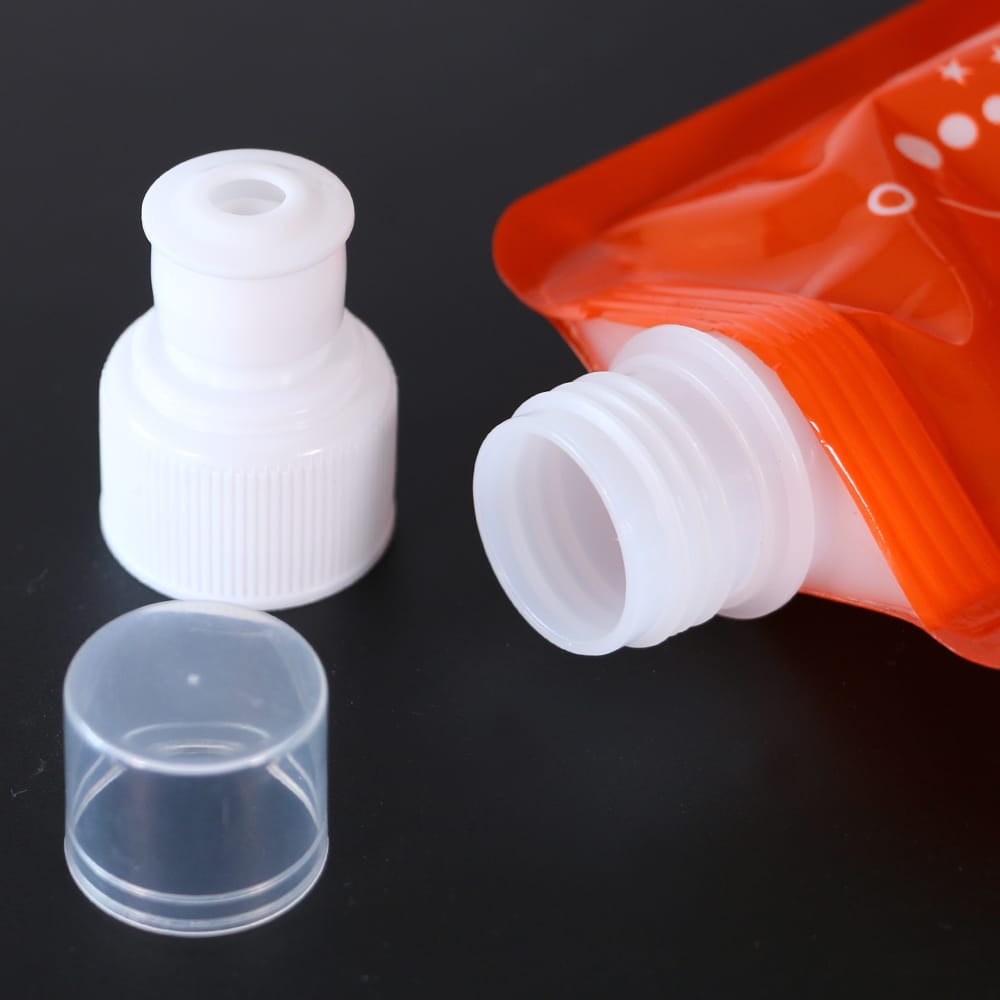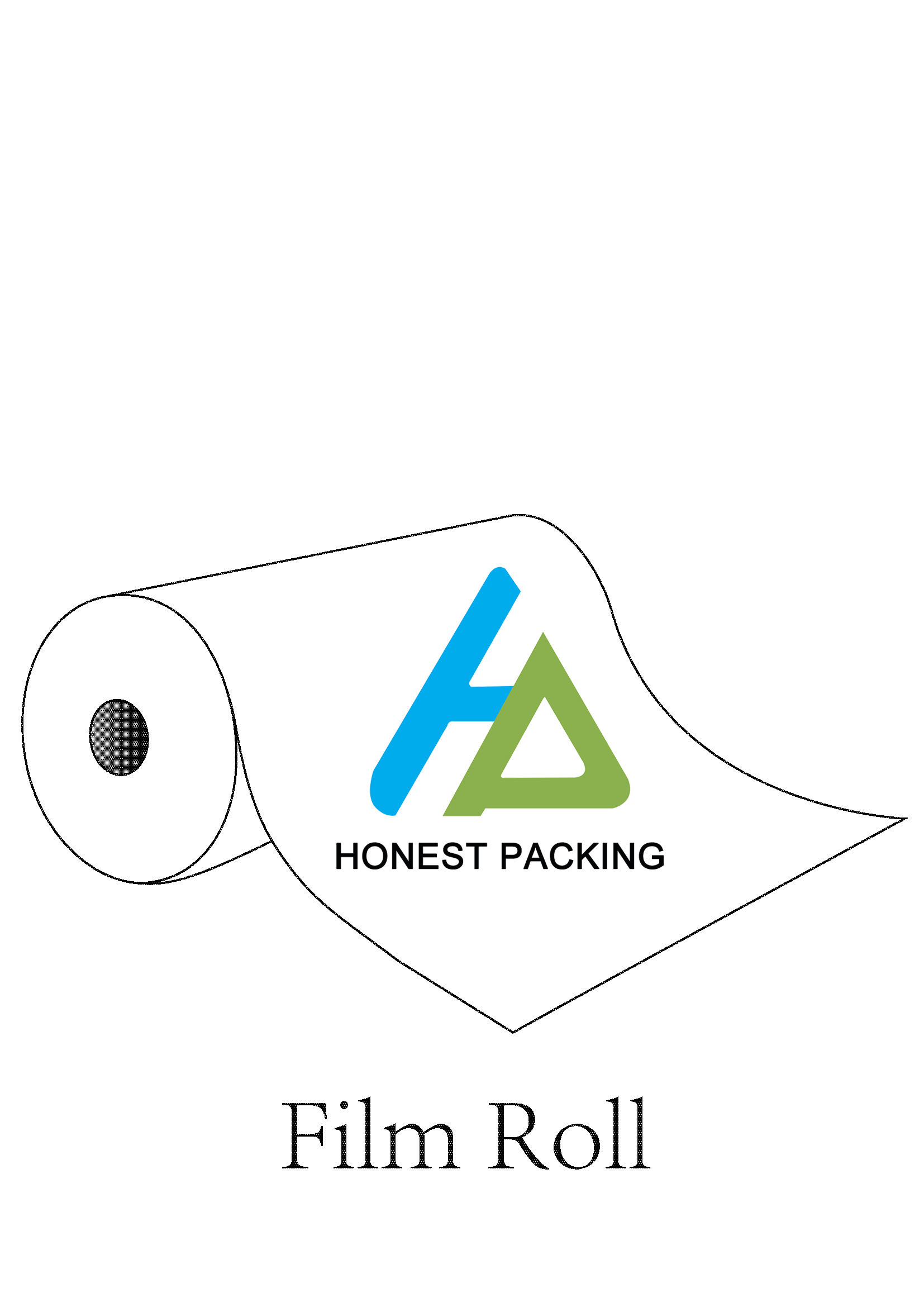Since milk is a fresh drink, the requirements for hygiene, bacteria, temperature, etc. are very strict. Therefore, there are also special requirements for the printing of packaging bags, which makes the printing of milk packaging film different from other printing technical characteristics. For the selection of milk packaging film, it must meet the requirements of packaging, printing, processing, storage and transportation and hygiene. At present, the commonly used film material is mainly polyethylene (PE) co-extruded film, which is melt extrusion of polyethylene resin and blow molding.
Types of films for milk packaging:
According to its layer structure, it can be basically divided into three types.
1. Simple packaging film
It is generally a single-layer film, which is produced by adding a certain proportion of white masterbatch to various polyethylene materials and produced by blown film equipment. This packaging film has a non-barrier structure and is hot-filled by pasteurization (85°C/30min), with a short shelf life (about 3 days).
2. Black and white co-extrusion packaging film with three-layer structure
It is a high-performance composite film made of LDPE, LLDPE, EVOH, MLLDPE and other resins, co-extruded and blown with black and white masterbatches. The black masterbatch added in the heat-seal inner layer plays the role of blocking light. This packaging film adopts ultra-high temperature instantaneous sterilization and hydrogen peroxide sterilization methods, and the shelf life at room temperature can reach about 30 days.
3. Black and white co-extrusion packaging film with five-layer structure
An intermediate barrier layer (composed of high-barrier resins such as EVA and EVAL) is added when the film is blown. Therefore, this packaging film is a high-barrier aseptic packaging film with a longer shelf life and can be stored at room temperature for about 90 days. Three-layer and multi-layer black and white co-extruded packaging films have excellent heat-sealing properties, light and oxygen resistance, and have the advantages of low price, convenient transportation, small storage space, and strong practicability.
Performance requirements of polyethylene film for dairy products:
In order to meet the requirements of milk filling and printing, the following aspects are mainly required for polyethylene film.
1. Smoothness
The inner and outer surfaces of the film should have good smoothness to ensure that it can be filled smoothly on the high-speed automatic filling machine. Therefore, the dynamic and static friction coefficient of the film surface should be relatively low, generally requiring 0.2 to 0.4 The smoothness of the film After the film is formed, the slip agent migrates from the film to the surface and accumulates into a uniform thin layer, which can significantly reduce the friction coefficient of the film and make the film have good smoothness. Effect.
2. Tensile strength
Since the plastic film is subject to the mechanical tension from the automatic filling machine during the filling process, it is required that the film must have sufficient tensile strength to prevent it from being pulled off under the tension of the automatic filling machine. In the film blowing process, the use of LDPE or HDPE particles with a lower melt index is very beneficial to improve the tensile strength of polyethylene films.
3. Surface wetting tension
In order to make the printing ink spread, wet and adhere smoothly on the surface of the polyethylene plastic film, it is required that the surface tension of the film should reach a certain standard, and it is necessary to rely on corona treatment to achieve a higher wetting tension, otherwise it will affect the ink on the film. The adhesion and firmness of the surface, thus affecting the quality of the printed matter. It is generally required that the surface tension of the polyethylene film should be above 38dyne, and it is better if it can reach above 40dyne. Since polyethylene is a typical non-polar polymer material, it does not contain polar groups in its molecular structure, and has high crystallinity, low surface free energy, strong inertness, and stable chemical properties. Therefore, the printing suitability of film materials is relatively high. Poor, the adhesion to the ink is not ideal.
4. Heat sealing
The most worrying thing about automatic film packaging is the problem of bag breakage caused by leakage and false sealing. Therefore, the film must have good heat-sealing bag-making properties, good sealing performance, and a wide heat-sealing range, so that it can be used in packaging. When the speed changes, the heat sealing effect is not greatly affected, and MLDPE is often used as the heat sealing layer to fully ensure the stability of the heat sealing conditions and the heat sealability. That is to say, it is necessary to ensure heat sealing and to be able to cut smoothly so that the molten resin does not stick to the knife.
Adding a certain proportion of LLDPE in the film blowing process can significantly improve the low temperature heat sealing performance and inclusion heat sealing performance of the film, but the amount of LLDPE added should not be too large, otherwise the viscosity of the polyethylene film will be too high, and the heat sealing process It is prone to sticking knife failure. For the structural design of the film, the packaging film of the corresponding structure can be selected according to the different contents of the package and its shelf life.
Post time: Jul-04-2022



